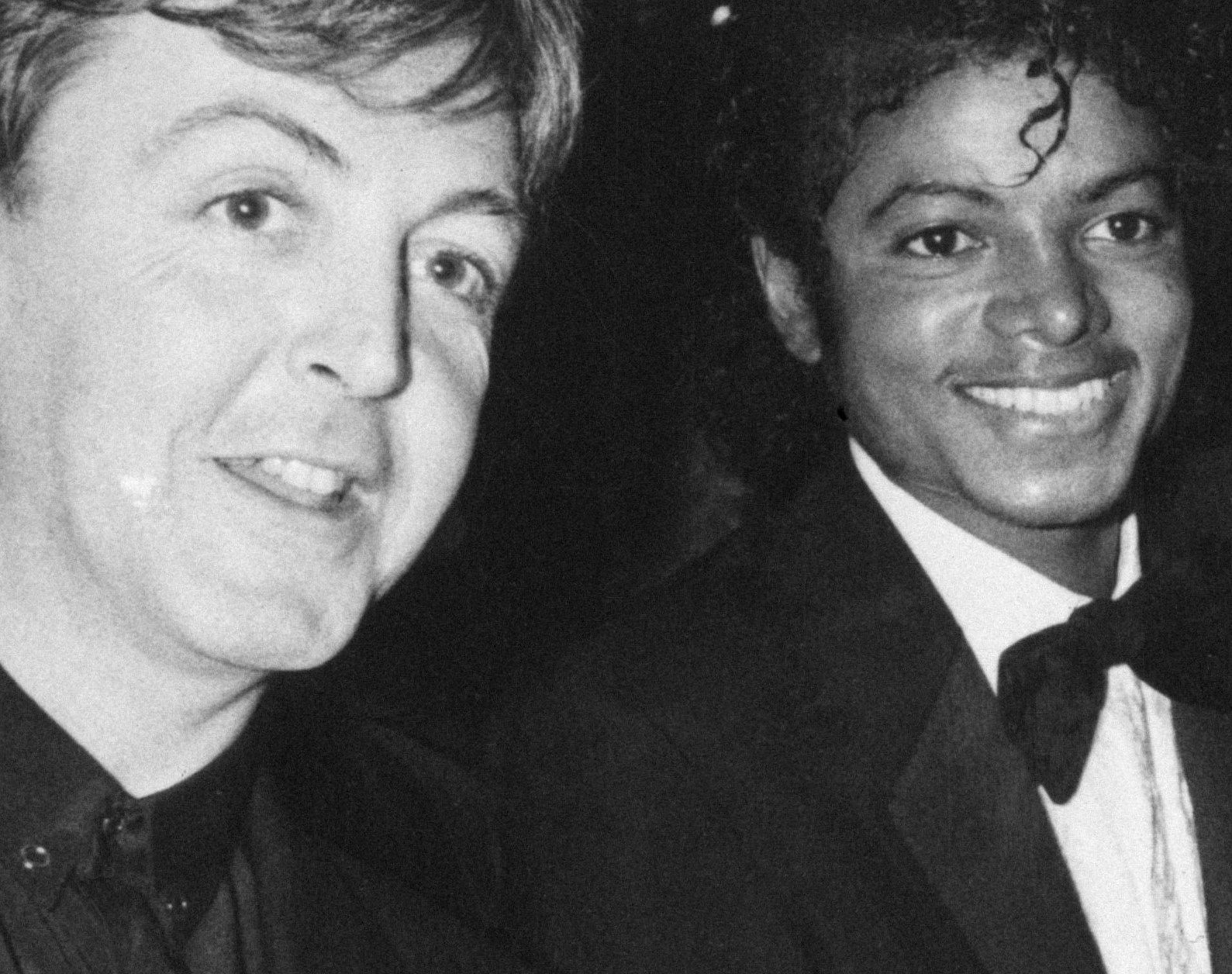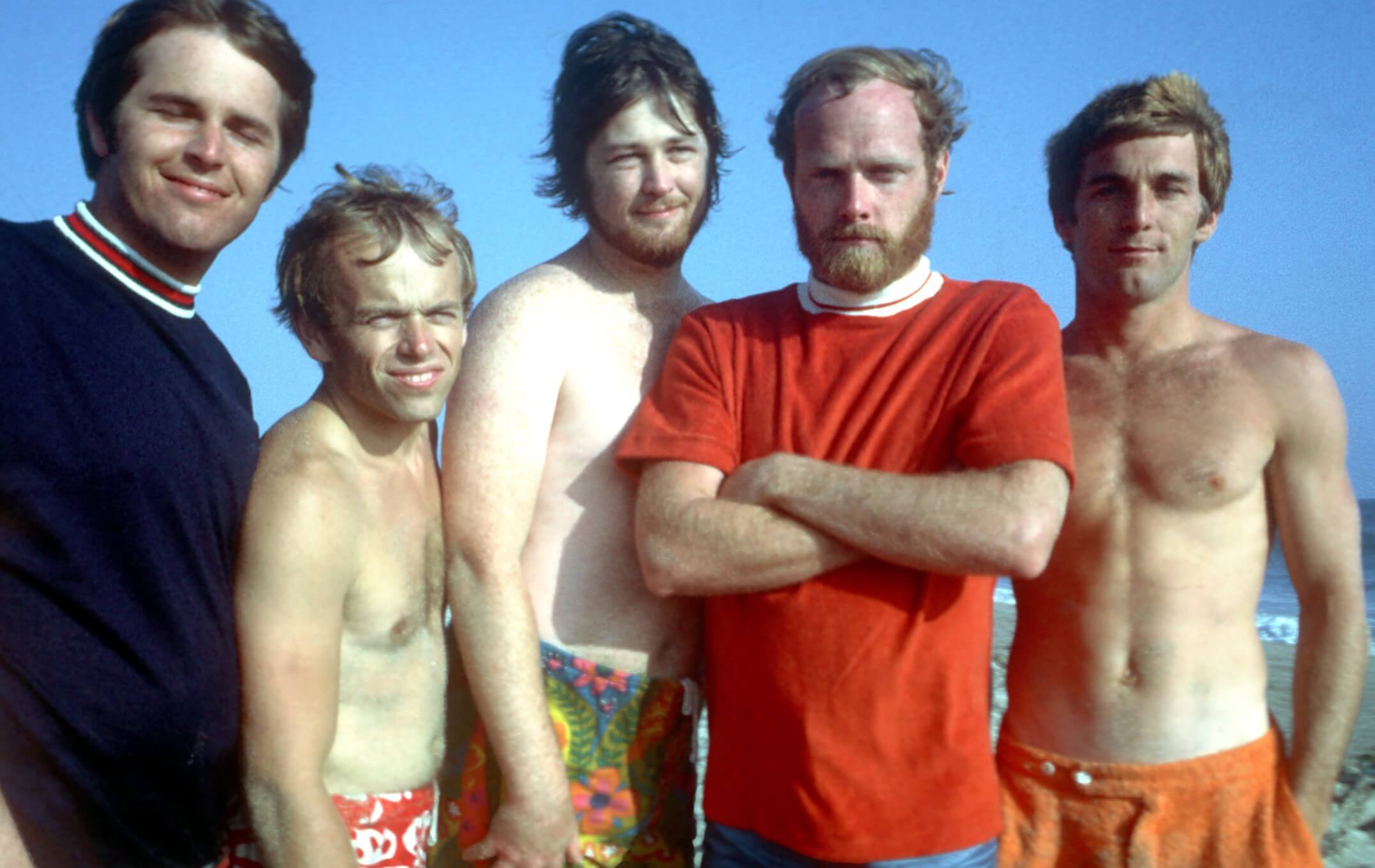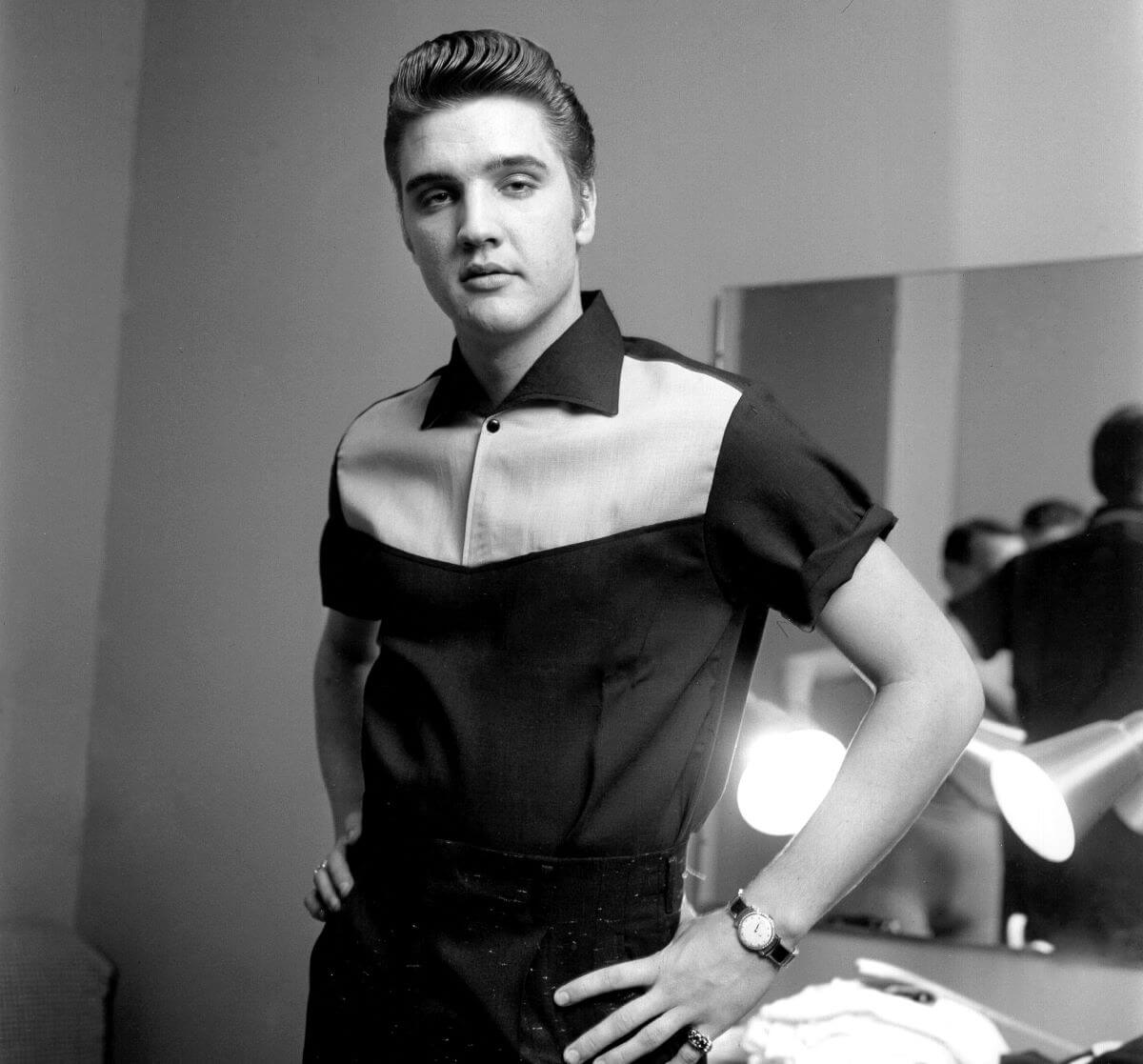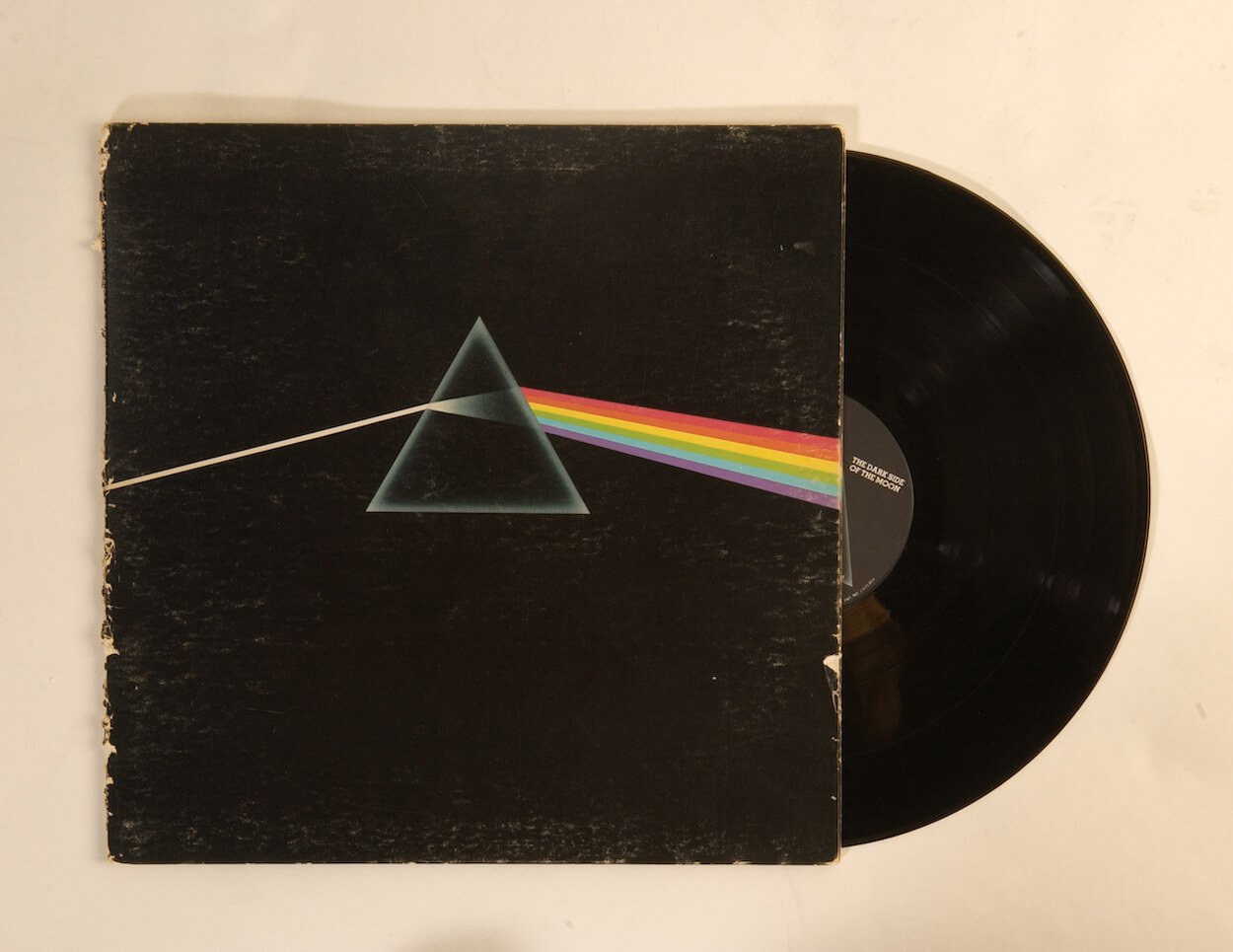
The 5 Best Pink Floyd Album Covers
Album artwork flipped from being an afterthought to a feature when classic rock bands started selling millions of records during their heyday. The large surface area of vinyl LP sleeves gave artists a huge pop culture canvas to work with, and they took advantage. Pink Floyd took full advantage of the album cover-as-artwork movement, and their best sleeves remain some of the most iconic ever created. The Beatles and Rolling Stones saw some of their album artwork banned, but Pink Floyd never ran into that problem.
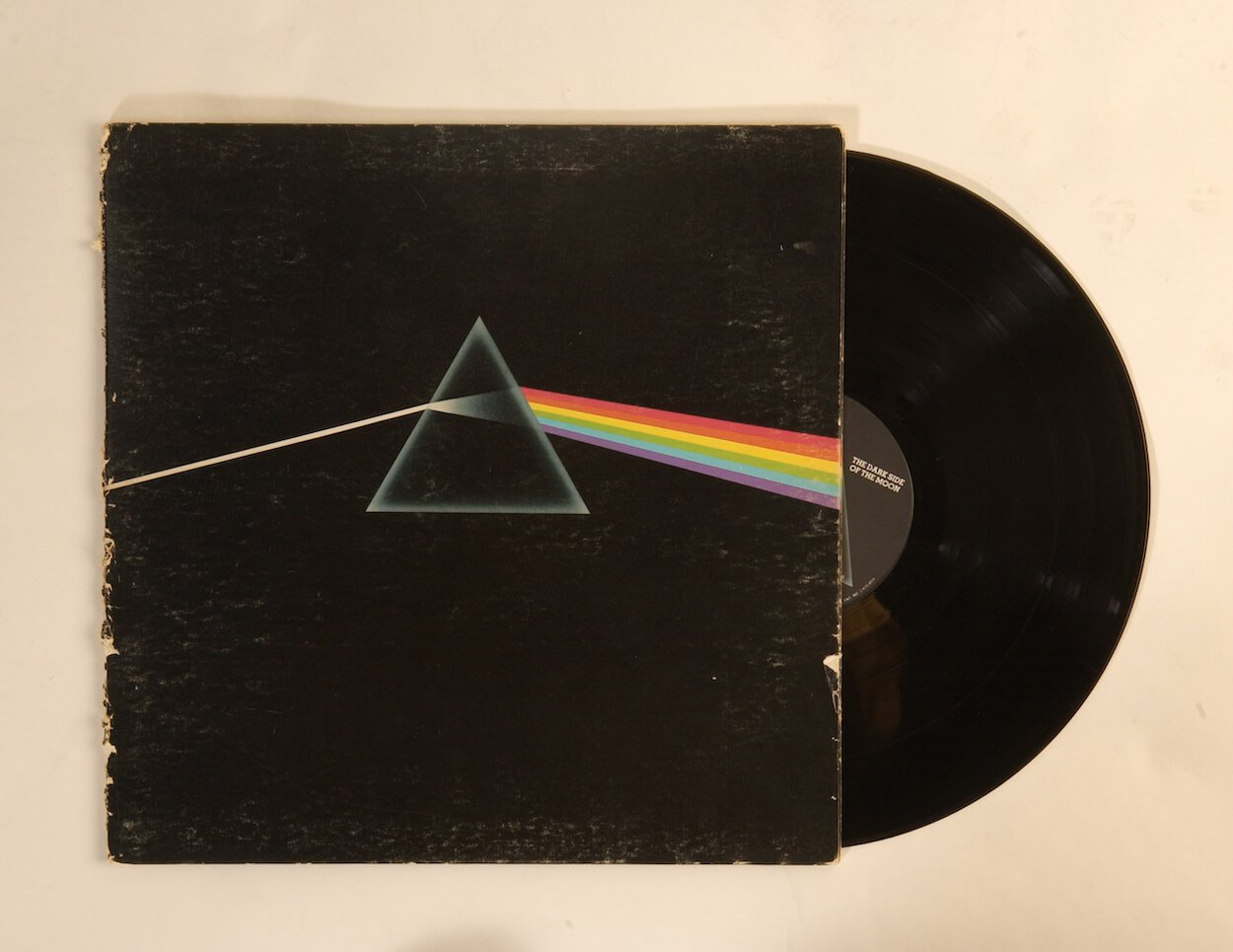
1. ‘The Dark Side of the Moon’
Simple. Elegant. Eye-catching. Memorable. Enduring.
We’re starting our countdown of the best Pink Floyd album covers at No. 1 because there’s no reason to delay the inevitable. The Dark Side of the Moon leaves an impact on anyone who listens to it, and the album cover does the same.
The simplicity is almost awe-inspiring. The pyramid prism spraying a rainbow of color on a black background is visually arresting. The band’s name doesn’t appear, and that’s a good thing. Words would only mar the artistic beauty of the simple yet breathtaking design.
“[P]ink Floyd asked for something very simple and very graphic instead of one of our surrealist photo designs, which wasn’t our style at all,” Aubrey Powell, part of the Hipgnosis design group that created many of Pink Floyd’s album covers, said (per Forbes). “I could illustrate quite well, so I drew it out on a piece of paper. We rushed up to Abbey Road Studios and said [to the band], ‘How about that?’ And they all went, ‘Yeah, that’s us! That’s Pink Floyd.’”
Pink Floyd demanded something different for its Dark Side album cover, Hipgnosis delivered, and one of the most iconic sleeves ever created was the result. And the band delivered a timeless album that managed to outsell The Beatles and Led Zeppelin.
5. ‘Atom Heart Mother’
Pink Floyd didn’t want a surrealist photo for The Dark of the Moon album cover. Yet a surrealist photo worked out quite well for 1970’s Atom Heart Mother.
The image of a Holstein cow standing in a lush, green meadow underneath a bright blue sky while looking over its shoulder as if it’s saying, “What!?” was eye-catching. The music on the album wasn’t anything special — a pair of instrumental experiments bookending a trio of unmemorable but more standard songs. It’s middle of the road in terms of Pink Floyd’s best albums. Yet Atom Heart Mother and its standout cover gave Floyd its first gold record in the United States and its first No. 1 album in England, per the Official Charts Company.
4. ‘Ummagumma’
Like Atom Heart Mother, Floyd’s Ummagumma leans heavily on experimentation and features very little of the prog rock DNA that shaped the band in the 1970s. The double-disc set included a live LP and a studio album on which three of the five songs are multi-part suites.
What Ummagumma lacks in memorable musicianship, it makes up for with its artwork. It might be one of the most clever Pink Floyd album covers, and that’s saying something. A series of photos have the band members swap spots. The images appear in a prominently featured picture frame.
Guitarist David Gilmour sits on a stool in an open doorway on the main cover . Bassist Roger Waters sits on the ground behind him, drummer Nick Mason stands on the grass behind Waters, and keyboard player Rick Wright stretches on the lawn behind Mason. The subsequent photos — placed within a picture frame on the left side of the cover — see each band member move forward to take their place on the stool.
The music sees the band searching for their way following the departure of founding member Syd Barrett, but Ummagumma features one of the best Pink Floyd album covers.
3. ‘Wish You Were Here’
Floyd’s followup to The Dark Side of the Moon carries the torch from its predecessor. It contains some of the band’s most timeless music and has one of Pink Floyd’s best covers.
The two halves of “Shine on You Crazy Diamond” that bookend the record as well the title track explore loss — of identity, of a friend (Barrett), of the band’s north star that helped guide them in their earliest days.
Yet Wish You Were Here’s front cover focuses more on record industry glad-handing and back-stabbing. The man on fire represents musicians getting burned by record company executives who promise the world with a handshake and pilfer the coffers with the other hand.
The artwork includes an invisible man standing in the middle of nowhere, which more accurately conveys the album’s title. That the band could so powerfully yet seamlessly depict two thematic elements on the same album cover is nothing short of astounding.
2. ‘The Wall’
Pink Floyd scored one of the best covers of all time with a sleeve that was almost entirely white six years after Dark Side scored with a sleeve that was mostly black.
The LP version of 1979’s epic The Wall features only intersecting horizontal and vertical gray lines on a white background. It mimics the look of a brick wall. The band’s name doesn’t appear on the front, and there aren’t any song titles on the back. Pink Floyd’s name appears in tiny, sloppy print on the spine (and also in the fine-print copyright on the back), and that’s it.
It’s imposing and memorable, just like the album itself. The Wall is definitely one of Pink Floyd’s best album covers, and the record gave them their only U.S. No. 1 as “Another Brick in the Wall Pt. 2” (the “We don’t need no education” song) spent four weeks atop the Billboard chart in 1980. The album went platinum in less than four months, spent 15 weeks atop the Billboard albums chart in 1980, and sold more than 20 million copies.
We should also note that More, the soundtrack to the movie of the same name, is noteworthy for preceding Led Zeppelin’s Houses of the Holy. Both records feature faceless people in a natural setting underneath a neon orange sky. Hipgnosis designed both covers, but Pink Floyd’s hit shelves nearly four years before Zep. It’s a notable similarity but not enough to push More into our list of the five best Pink Floyd album covers.
For more on the entertainment world and exclusive interviews, subscribe to Showbiz Cheat Sheet’s YouTube channel.
